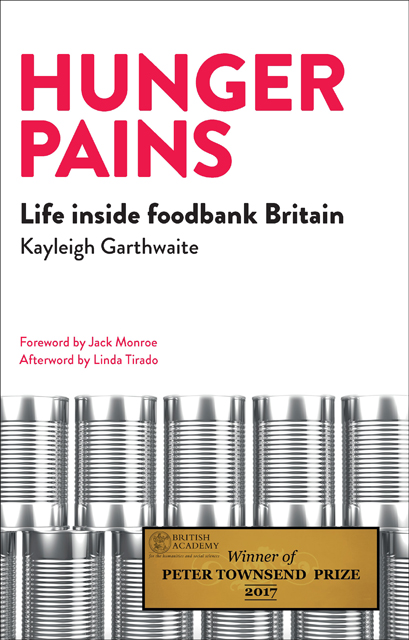Book contents
- Frontmatter
- Dedication
- Contents
- List of figures and boxes
- Acknowledgements
- Foreword by Jack Monroe
- Introduction
- one Researching foodbank use
- two Foodbanks: what do they do?
- three The politics of foodbank use in the UK
- four Why do people use a foodbank?
- five All work, low pay: finding, keeping and doing precarious jobs
- six “Doing the best I can with what I’ve got”: food and health on a low income
- seven Stigma, shame and “people like us”
- Conclusion: is foodbank Britain here to stay?
- Afterword by Linda Tirado
- Notes
- Bibliography
- Index
two - Foodbanks: what do they do?
Published online by Cambridge University Press: 15 April 2023
- Frontmatter
- Dedication
- Contents
- List of figures and boxes
- Acknowledgements
- Foreword by Jack Monroe
- Introduction
- one Researching foodbank use
- two Foodbanks: what do they do?
- three The politics of foodbank use in the UK
- four Why do people use a foodbank?
- five All work, low pay: finding, keeping and doing precarious jobs
- six “Doing the best I can with what I’ve got”: food and health on a low income
- seven Stigma, shame and “people like us”
- Conclusion: is foodbank Britain here to stay?
- Afterword by Linda Tirado
- Notes
- Bibliography
- Index
Summary
What is a foodbank?
Throughout the research, I found a substantial lack of awareness of how foodbanks actually work and what it is they do. Over the 18 months, I was asked such questions as: “Can you just turn up and pick whatever you like off the shelves?” “You have to be on benefits to go to a foodbank, don’t you?” and “Aren’t people just becoming dependent on foodbanks and then using their money to buy other things instead, like big TVs, alcohol and fags?” So, how do foodbanks actually work? It is essential to explain exactly how a foodbank works, especially in a context where harmful and persuasive myths surround foodbank use in both government rhetoric and the media.
As we saw in the Introduction, in 2014/15 over 1 million people used a Trussell Trust foodbank. Figure 2.1 shows how foodbank use has ballooned since 2008/09.
In 2014/15 there were over 400 foodbanks in the UK. But this does not capture the full extent and reach of the Trussell Trust foodbank network. Adrian Curtis, the Trust’s Foodbank Network Director, has said:
“We tend to talk more now about ‘foodbank centres’ when measuring the size of the network. There are around 445 foodbanks in Britain. But many of those foodbanks are now operating at a number of different centres where people can come and receive food.
We estimate that there are around 1,400 foodbank centres now.”
One or two new foodbanks were opening in new towns each week in 2014/15, but growth in new foodbanks has slowed. The real growth is in the number of foodbank centres which are being opened by each existing foodbank. So, for instance, Coventry Foodbank counts as a single ‘foodbank’, but now has 16 centres which give out food at various locations around the city, seven days a week. The foodbank I volunteered at was a ‘foodbank centre’ of the larger Billingham foodbank, some four miles away from the town centre of Stockton-on-Tees. The Trust operates on a ‘bottom-up’ basis, whereby local Christian churches and community groups apply to the Trust to open a foodbank and then make a one-off donation of £1,500 for the purchase of the franchise. The Trust estimates that each foodbank receives about £5,000 in resources and services for the £1,500 it contributes. This includes things like free, bespoke website and marketing resources, an operating manual, on-site training and ongoing support and access to grants from corporate relations.
- Type
- Chapter
- Information
- Hunger PainsLife inside Foodbank Britain, pp. 35 - 56Publisher: Bristol University PressPrint publication year: 2016

